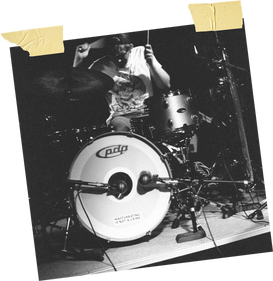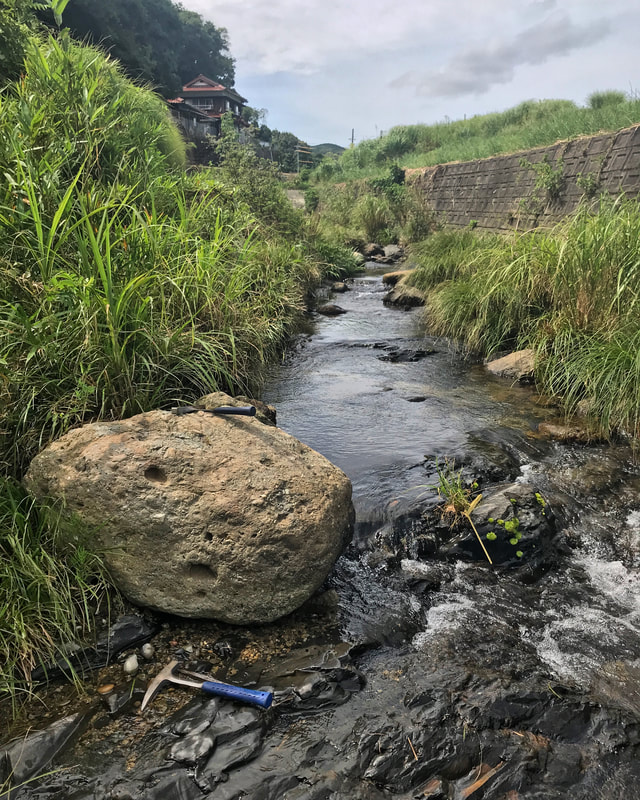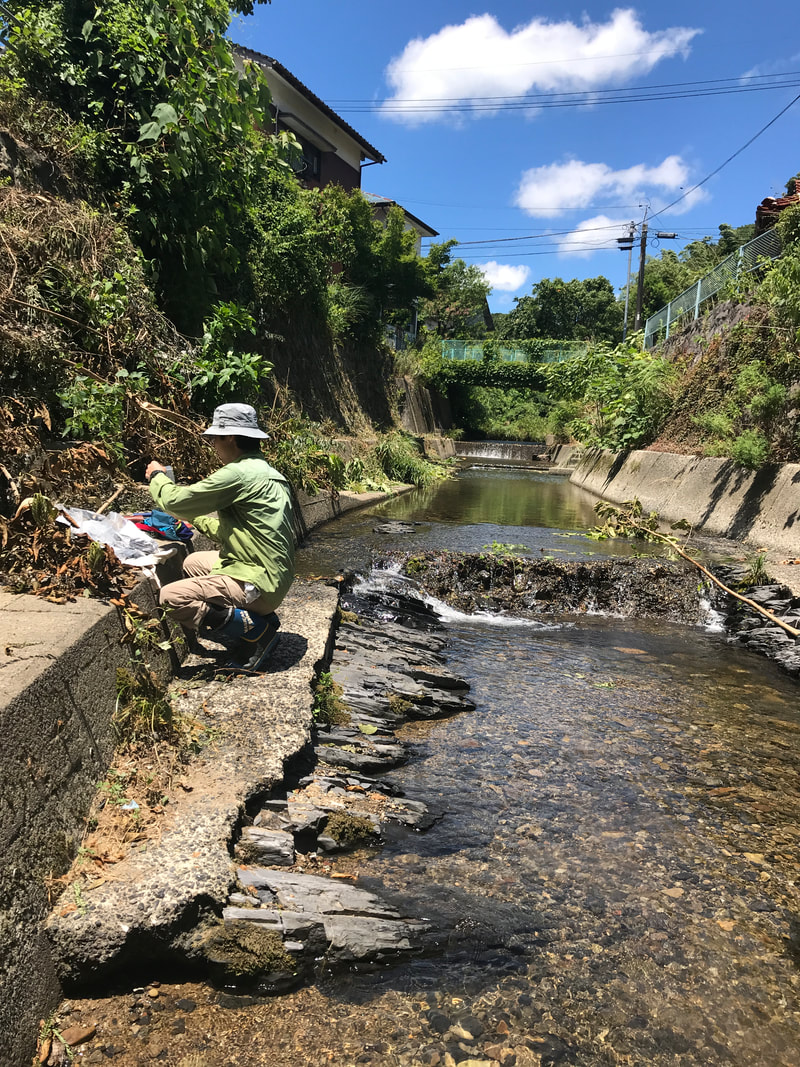|
I am a vertebrate paleontologist broadly interested in using geological field and lab methods to elucidate evolutionary patterns in the fossil record. My research interests include the anatomy and evolution of early dinosaurs and their close kin, the use of geochemical proxies such as carbon isotope stratigraphy to characterize environmental and evolutionary change in the geologic record, and the impact of mass extinctions on the taxonomic diversity of tetrapod vertebrates.
|
Above: Typical outcrop of the Lower Jurassic Nishinakayama Formation in the river Eragawa in Toyotacho, Shimonoseki, Yamaguchi, Japan. July 2018.
Below: Collaborator Kentaro Izumi (Chiba University) labeling samples from the Nishinakayama Formation in Eragawa. July 2018. |



